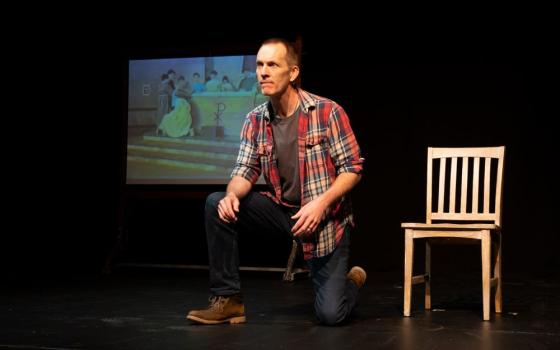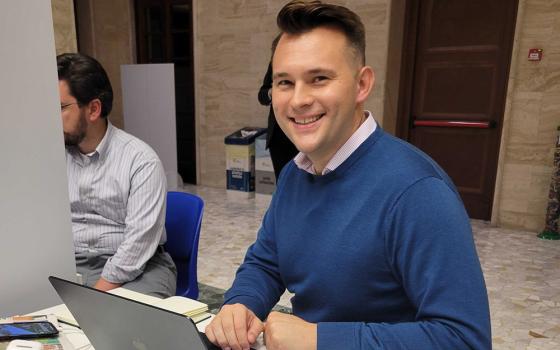
At Holy Redeemer Catholic Church in Washington Aug. 25, people gather for a Mass that was part of a celebration marking the 50th anniversary of the March on Washington. Co- Sponsored by Pax Christi USA, the anniversary event included a discussion on race, religion and the legacy of the 1963 civil rights march. (CNS/Nancy Phelan Wiechec)
Patrick O'Neill provided us with a wistful stroll down memory lane as he lamented the fading of the Catholic peace movement of the 1960s, '70s and '80s. You're right, Patrick, the Catholic peace movement ain't what it used to be. There are profound changes taking place in the movement, but I'm not sure that you or NCR fully grasps them. These changes involve both a dying and a rising.
What is dying is the white Catholic middle-class liberal construct of what constitutes "the Catholic peace movement." This construct was, in part, created by Pax Christi USA beginning in the 1970s. White Catholic peace activists founded the Pax Christi USA of the '70s to serve the needs of white Catholic peacemakers. In many ways, we succeeded in moving nonviolent peacemaking into the mainstream of Catholic social thought and practice. For many years, this work went well for us. But while we were busy trying to change the world, the world changed.
One of the most important of these changes is the browning of the U.S. Catholic church. As an organization that is still 90 percent white, Pax Christi folks are coming to realize that many important voices have been left out of the conversation about what it means to engage in the nonviolent struggle for peace, with justice as part of the peace movement.
Unfortunately, many of us in the white peace movement have become comfortable with speaking and acting on behalf of people of color without always being accountable to them. And we have so thoroughly colonized the language, theology, spirituality and praxis of nonviolent peacemaking in the U.S. Catholic church that most of the struggles for peace with justice in this country being led by people of color are not even considered part of the peace movement.
In the same issue in which the O'Neill article was published, an NCR editorial, "Catholic voice for peace more urgent than ever," seemed to suggest that we look to the anti-nuclear organizing being done in Kansas City, Mo., as a possible way forward. They may be right, but I cannot tell from the way NCR covers "the peace movement."
Maybe the Kansas City peace activists are building relationships with marginalized communities of color in their city in order to ensure that their work is done in a way that is accountable "to the least of these." Maybe the folks in Kansas City are building a broad-based coalition that includes activist leaders from local communities of color -- not merely as window dressing but as fully empowered collaborators. Maybe when they "crossed the line," these peace activists were commissioned and mandated to do so by the leaders of the communities most directly affected by the wasteful spending of billions of dollars for nuclear weapons.
All of these things might be happening, but NCR does not tell us because being accountable to people of color is not part of its understanding of what constitutes peacemaking. As a result, it is impossible to know if the editors are inviting us to join O'Neill on his nostalgic trip back in time or whether they are proposing a viable way forward for the Catholic peace movement.
I believe there is no future for a Catholic peace movement that is dominated by white, middle-class, liberal Catholics. No doubt there are many in the Catholic peace movement who would disagree with me. This is understandable, given that we are in a time of transition that challenges our very identity and our most cherished assumptions.
As a white, middle-aged, middle-class Catholic liberal I have only the vaguest notion of what is being born out of the struggle to transform Pax Christi USA into an anti-racist, multicultural Catholic movement for peace with justice. But from where I stand, I see the rising of a new movement that will be more focused on the authenticity of the relationships we forge with the marginalized and less focused on the list of issues we work on. It will not only be based on what we are willing to risk, but to whom we are accountable. The question is whether NCR will have the eyes to see it, the ears to hear it or a mind open enough to recognize it as it springs forth.
[Tom Cordaro has been involved in the Catholic peace movement since 1978 and lives in Aurora, Ill.]



